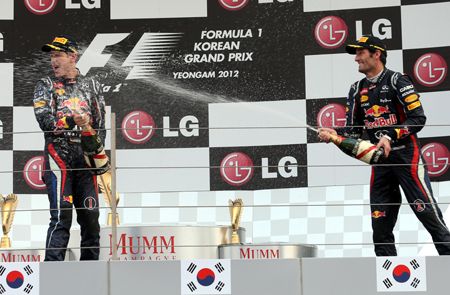
Why Korean GP loses money

After the third consecutive money-losing Korean Grand Prix in Yeongam, South Jeolla Province, the organizing committee needs to ask itself if it is really trying to make money from the event.
With the Formula One race expected to see a 30 billion won ($27 million) loss this year, the organizers had the important task of reducing the short fall as much as possible but their efforts seem to have made little difference so far.
Although the Korea International Circuit is a 5.615-kilometer track, there were only four automated teller machines (ATMs) there with one out of service, and it was really difficult to find them. The numerous staff on duty were nice and seemed to be well-aware of the nitty-gritty of the event but none were able to explain where the ATMs were located. As a result, a plethora of potential consumers, who only had credit cards, had to turn away from many stalls that only took cash.
“If they wanted to make money, they had to have more ATMs available,” American Lindsey Hippen said. “Wandering around this vast area, we only saw two, and one of them was not even working, so we couldn’t buy food and stuff we wanted until we finally found one that worked.”
English signs and brochures were in place but many food and souvenir stands did not have English signs. Therefore, non-Korean speakers had to walk a long way to figure out what the stalls were selling.
Also, a small number of vending machines were obviously not enough for the number of visitors and some didn’t even take bills.
“When I was at a K-pop concert, I wanted to get something to drink, so I looked around and found a vending machine that only took coins. With the cheapest drink costing 1,000 won, I couldn’t get anything,” Japie Steyn from South Africa said. “I mean who carries 1,000 won in coins in their pocket?”
As the organizers decided to give more than a 40 percent discount on tickets, the biggest source of profit, they should have taken advantage of were merchandise sales.
Meanwhile, the planners were unhesitant about spending money on running a 45-seat shuttle bus from the media center to hotels for a small number of journalists.
“Three buses took turns yesterday running from the Hyundai Hotel to the media center every thirty minutes. And less than five people used the service each time from 11 a.m. to 6 p.m.,” bus driver Yoon Hyung-guk said. “It is good for the bus company since they make a lot by doing this but I think it is a big waste of money.”
A total of 3,863 volunteers and staff are involved with the race over the three days, which seems a lot seeing as the event only sold 160,000 tickets last year, with many of them often seen sitting around. Figures for this year’s race were not available when going to press but 56,000 attended Saturday’s qualifying session, compared to 64,000 last year.
The organizing committee has shown improvements in some areas over the past three years such as providing more information and better transportation.
Nevertheless, if the county keeps losing vast amounts of money in what is supposed to be one of the world’s most lucrative sporting events, they have to seriously reconsider keeping the Korean Grand Prix. <The Korea Times/Jung Min-ho>



